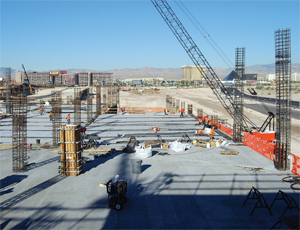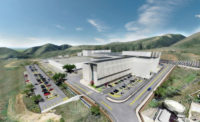While the overall economy shows signs of slowly coming back to life, the airline industry continues to struggle. Over the past year, the combination of substantially lower passenger traffic, still-wobbly financial markets and nervous carriers has curtailed the revenue streams airports typically count on for major capital projects.


The International Air Transport Association predicts airlines’ worldwide losses in 2009 will total $11 billion, while the Airport Transportation Association of America forecasts a nearly 7% capacity cut by the six largest U.S. carriers, the deepest such reduction in more than 60 years.
“The current economic situation has ramped up the volatility and uncertainty of an industry that already experiences a high rate of flux,” says Dave Rhodes, deputy manager of aviation and head of planning and development for Denver International Airport (DIA).
As a result, “airports are more circumspect about what they can do,” says Christopher Oswald, vice president of safety and technical operations for the Airports Council International-North America. But although the general outlook remains cautious, the fate of capital programs varies from city to city. “Some airports are deferring projects, while the gradual thawing of credit markets is allowing others to move forward,” Oswald says, citing as an example the $300-million renovation and expansion of Terminal 2/Boarding Area D at San Francisco International Airport.
While the protracted slump in Las Vegas’ casino-driven economy has forced McCarran International Airport to shelve a $30-million maintenance facility, a heliport and several small projects, work on the centerpiece $2.4-billion, 1.9 million-sq-ft Terminal 3 project remains on track for its mid-2012 opening.
Jim Ryan, assistant director for construction engineering for the Clark County, Nev., Dept. of Aviation, says the near-term challenges have not dimmed the airport’s long-term vision. “We still know what we want to accomplish,” he says.
San Diego International Airport has begun a four-year, $1-billion program that includes a three-story, 10-gate expansion of Terminal 2 and approximately 1.5 million square feet of new taxiway and jet parking areas. Funding will come from passenger facility charges (PFCs), airport revenue bonds, cash on hand and FAA grants. “Every downturn is followed by an upturn,” says Steven Shultz, the airport’s deputy director of public and community relations. “If an airport is not prepared, it can find itself in a bad situation.”
Other large airports have adopted a similar approach. DIA has begun mapping a strategy for its South Terminal Project that will coincide with an extension of Denver’s commuter rail line from downtown. The project includes a new rail station, a Westin Hotel and an expansion to the Jeppesen Terminal.
More projects may follow as DIA completes a reevaluation of its master plan. “With more than 51 million passengers last year, our capacity has more than tripled [the scope of ] the original build-out plan,” Rhodes says.
A master-plan update also has led Dallas Fort Worth (DFW) International Airport to approve an eight-year Terminal Development Program (TDP) that will renovate its four original terminals, slated to begin in early 2011.
Perfecto Solis, DFW’s vice president of airport development and engineering, says TDP has the support of air...




Post a comment to this article
Report Abusive Comment